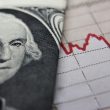by Joseph V. Amato, President and Chief Investment Officer—Equities, Neuberger Berman
When I started out on Wall Street as a youngster, old hands used to offer words of wisdom about the importance of credibility and good faith. “Your word is your bond,” they would say. “Once you lose your credibility, you can’t get it back.” In thinking through the current challenges of Fed Chair Jerome Powell, I thought back to these tried and true sayings.
Last August, Powell announced that the central bank would no longer target 2% inflation but rather 2% average inflation over the long run. Given the length of time inflation had spent below 2%, that implied a willingness to let the economy run “hot” for a longer period.
It was either the most significant change in Fed policy for a decade—or an audacious bluff to stir investors’ animal spirits.
The market has been challenging the Fed more aggressively since the start of the year, pushing breakeven inflation rates to their highest levels for seven years and almost doubling the 10-year U.S. Treasury yield.
Last week, the Fed pushed back. We think the central bank means what it says, and that this is consequential for equity and bond markets.
Inaction or Reaction?
In December, the Fed’s “dot plot” indicated that rates would be on hold until the end of 2023. Since then, interest rate markets have been betting that pouring a $1.9 trillion stimulus over a re-opening economy would trigger growth and inflation rates that would force the central bank to reconsider. The U.S. 10-year yield has pushed through 1.7% and futures markets imply multiple hikes in 2023.
Last week, the Fed raised its 2021 U.S. GDP growth forecast from 4.2% to 6.5%, and predicted unemployment would fall to 3.5% in 2023. But its dot plot barely moved. It still sees rates anchored for the next three years.
The equity markets are asking who should be believed.
One reason the Fed stayed put is because it expects U.S. inflation to hit 2.4% this year but slow to 2% in 2022. Powell also made it clear that policymakers want to wait for real economic data to make the case for action, rather than pre-empting the data based on forecasts—including forecasts implied by the bond markets. In both cases, the inaction restates the primacy of the new “long-run average” framework.
The unique nature of this recovery appears to give the Fed significant latitude for this approach. Many segments of the economy are still struggling, while some parts of the technology sector have enjoyed a decade’s worth of growth. If big inflation numbers emerge in places that can be dismissed as temporary and skewed by the base effect, central banks can stay true to their word.
Welcome Sign of Recovery?
Yields at 1.7%-plus need not be a source of great concern. That takes us back only to where they were in summer 2019—with 6.5% growth expected in 2021 instead of the 2.2% growth achieved in 2019, conditions still easy in most other financial markets, and little or no fear of any policy tightening this year. In fact, in light of these growth expectations we would be very concerned if long-term rates stayed at historically low levels. That may imply the market is highly skeptical about the economic recovery.
As such, we still regard the current rate framework as supportive for equity markets. With GDP growth accelerating, the market is projecting $200 of earnings per share for the S&P 500, up more than 40% on 2020 earnings. That implies a positive total return for the year even if multiples decline substantially.
Notably, despite the continued upward push in long-dated yields, the “long-duration” large technology growth stocks that have been under pressure lately have stabilized and staged a comeback, joining cyclical and “re-opening” stocks in the green.
Fight or Flight?
There are risks to this scenario. Sustained levels of inflation above 3% could be problematic, and U.S. five-year breakeven rates—a market projection of what the average annual inflation rate will be over the next five years—appear to be heading that way fast.
That is a notoriously volatile measure, however, and policymakers have now assured us that they will need to see overheating clearly in the economic data, not just in forecasts, before they act. We think this policy mix should continue to support equity markets and most risk assets. I’m reminded of another important dictum I was taught early in my career: “Don’t fight the Fed.”
Copyright © Neuberger Berman
















